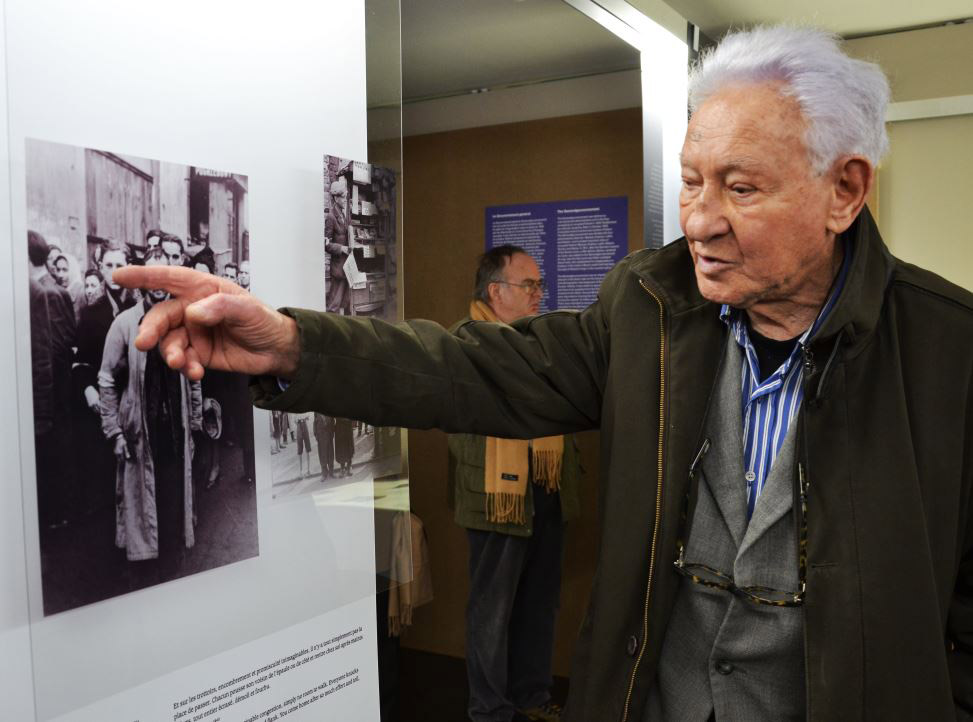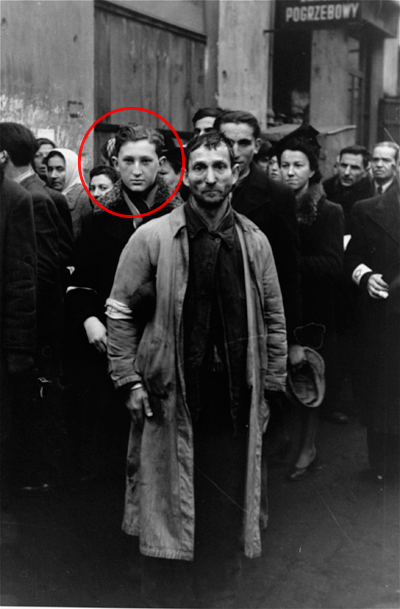Martin Gray, survivor of the Holocaust, passed away on Monday, April 25, 2016

M.Gray recognizes himself in a photo from the exhibition Regards sur les ghettos in 2014 at the Shoah Memorial © Shoah Memorial
Survivor of the Warsaw ghetto, survivor of the extermination camp of Treblinka, fighter of the Soviet army, Martin Gray was best known for his bestseller In the name of all my loved ones (1971), written with Max Gallo. He died on the night of Sunday to Monday, two days before his 94th birthday. The Shoah Memorial honors him.
On February 7, 2014, at the age of 92, Martin Gray visited the exhibition Regards sur les ghettos at the Mémorial de la Shoah and recognized himself in one of the key photos of the exhibition, taken in the Warsaw ghetto in 1941. Born on April 27, 1922 in Warsaw, Martin, Mieczysław or Miétek Grayewski at the time, had well known life in the ghetto where he had managed to make his family survive by becoming a smuggler at only 17 years old. But, the young Polish Jew will finally be deported to Treblinka with his mother and two brothers.
In his autobiographical book Au nom de tous les miens, Martin Gray testifies to the hell of the ghetto, then that of the extermination camp of Treblinka, where he is responsible for extracting the bodies from the gas chambers to bring them into the pits. He will manage to escape from this chaos aboard a wagon before joining the Soviet army.

Group of Jewish men taking off their hats in front of the German photographer. The young man on the left in the background is Martin Gray. Warsaw Ghetto, autumn-winter 1941. Credit: Willy Georg. © United States Holocaust Memorial Museum WILLY GEORG
After the war, the only survivor of his family, Martin moved to the United States where he made his fortune as an antique dealer and met his first wife, Dina Cult. They will finally settle in the south of France, near Mandelieu, with their four children. But in October 1970, the forest fire of the massif of Tanneron, near Cannes, will take away his wife and his four children, leaving him once again only survivor of this new tragedy.
Man, if he wants to (...) can always plant a tree of life next to a dead tree, he wrote in 'The Book of Life' in 1999. Nature and ecology, but also writing, will become engines for this committed humanist aspiring to happiness, who will end up remarrying and having five children. Our thoughts are with his loved ones today.


